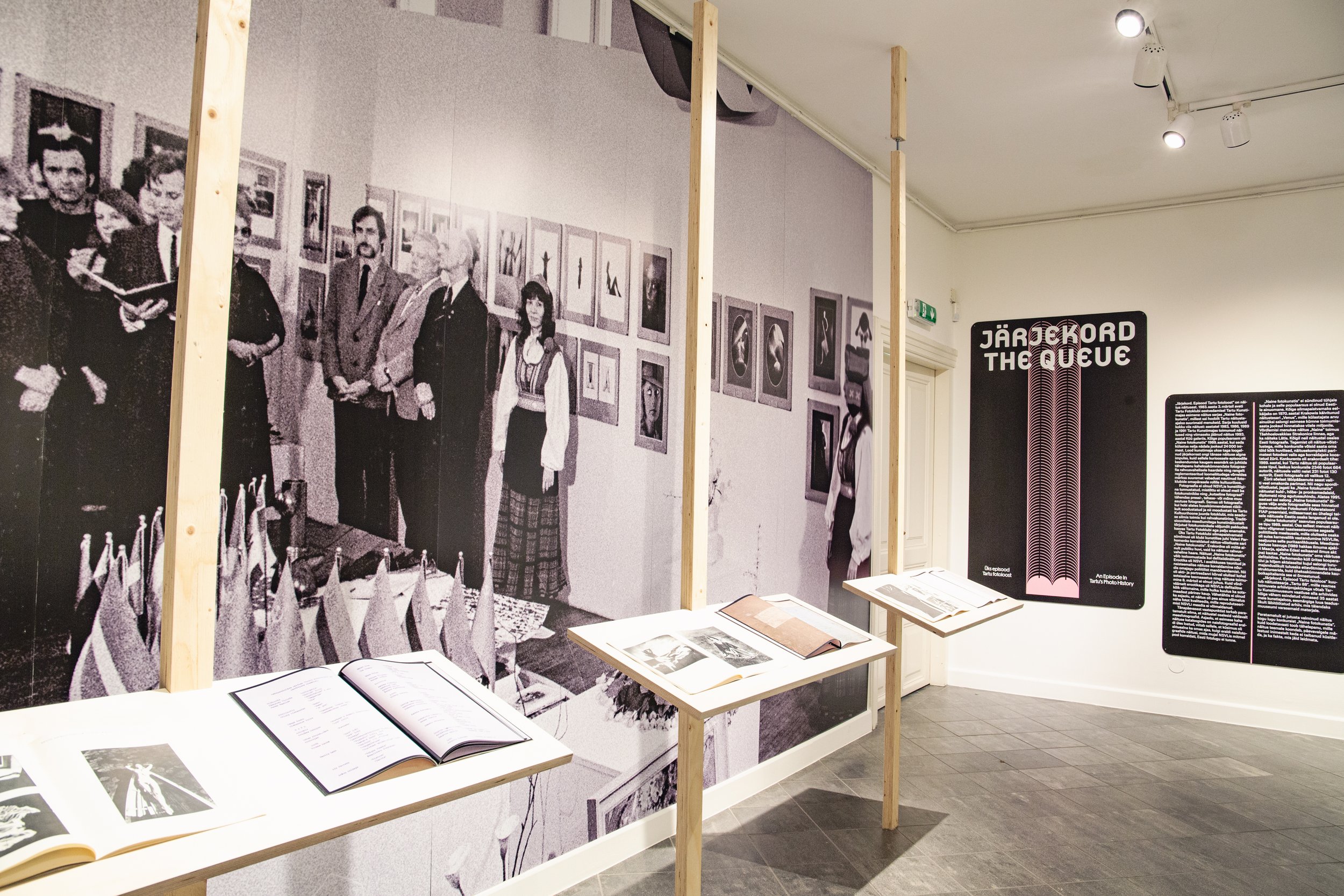Excerpt from the introduction to my article (find the link to download the full PDF on top of the page):
“It was a cool, greyish spring day. All was quiet outside an industrial-looking two-story building with a self-service carwash on one side and a storage facility on the other. The driveway to it led off a busy highway running alongside the Daugava River in Riga, Latvia. We arrived in separate unmarked ridesharing cars. I came alone. The other car dropped off the artist Sophie Thun and the curator Zane Onckule. In the small parking lot in front of the building, Onckule introduced me to Thun. Using a keyless entry app on my smartphone, I proceeded to open three different gates of the storage facility, and finally, we found ourselves looking at a view that is captured in Thun’s artwork Alise's storage in Riga for ZDZ on April 21, 2021, red (2021, C-Print, photogram).[i] This life-size (ca. 300 x 200 cm) color print depicts an open storage room, its metal door raised to give a glimpse into its inside, full of cardboard boxes containing negatives and prints, paintings wrapped in bubble wrap, pieces of furniture, and other random items that had belonged to my mother, Zenta Dzividzinska (1944-2011), a Latvian artist and photographer active locally and internationally in the 1960s.
The print, alongside many of the boxes depicted in it, later became part of Thun’s solo exhibition, “I Don't Remember a Thing: Entering the Elusive Estate of ZDZ” at the Kim? Contemporary Art Center in Riga, Latvia (July 15 to September 12, 2021).[ii] Onckule as its curator had envisioned a collaboration between the estate of a deceased artist, the practice of a contemporary artist, and the labor of an archivist. Onckule invited Thun to exhibit her own work as well as to study Dzividzinska’s archive and print new images from her negatives onsite. Onckule also invited the art historian and librarian Līga Goldberga to participate as an archivist who would list and describe the contents of the archive boxes during the exhibition and help Thun with the selection of negatives for printing.
At the center of the exhibition at the Kim? Contemporary Art Center was an installation of darkroom equipment with an enlarger, chemical and paper supplies, baths, and other accessories. It was Thun’s temporary darkroom where she worked several days a week throughout the run of the exhibition. Meanwhile, the presence of the archival boxes pointed to the invisibility of Dzividzinska’s work, as most of her images had never been printed, or printed only in the format of a contact sheet, and very few images had been exhibited during her lifetime.
Thun’s involvement, however, is more than just printing—she rather interpreted Dzividzinska’s negatives.[iii] I think about this process as similar to completing a sentence: one artist started saying something in the late 1960s but was interrupted and did not have a chance to finish the sentence. The other artist in the early 2020s kindly offered to pick up and complete the sentence in the absence of the first artist. I saw this process also as extremely difficult to define. For me, it is slightly uncanny to see, for example, my mother’s self-portraits exhibited or published under the name of Sophie Thun. The art-historical term “appropriation” does not fully address what is at stake in this collaboration between Thun and Dzividzinska’s archive. Thun’s approach differs in so many ways from the more well-known cases of photographic appropriation such as the ones by Sherry Levine or Richard Prince or even Louise Lawler. This article aims to highlight some of the issues that this unusual collaboration raised, at the same time providing a glimpse into Dzividzinska’s life as an innovative and radical woman artist who had been forgotten, overlooked, and misunderstood during her lifetime.”
[i] The abbreviation “ZDZ” here is a reference to the artist’s preferred signature, which came about from her frustration at people’s inability to correctly spell her last name. See Onckule, Z. “I Don’t Remember a Thing: Entering the Elusive Estate of ZDZ,” https://kim.lv/en/dont-remember-thing-entering-elusive-estate-zdz/
[ii] The title of the exhibition combines the title of Dzividzinska’s last major solo exhibition “I Don’t Remember a Thing” that took place in Riga in 2005 and the title of the article “Entering the Elusive Estate of Photographer Zenta Dzividzinska” that I wrote for MoMA Post, commissioned by the curator Inga Lāce, Contemporary and Modern Art Perspectives (C-MAP) Central and Eastern Europe Fellow at the MoMA. See Tifentale, A. “Entering the Elusive Estate of Photographer Zenta Dzividzinska.” MoMA Post, March 24, 2021, https://post.moma.org/entering-the-elusive-estate-of-photographer-zenta-dzividzinska/
The exhibition’s wall text, labels, press release, and installation shots are archived and available on the Contemporary Art Library website: https://www.contemporaryartlibrary.org/project/sophie-thun-and-the-estate-of-zenta-dzividzinska-at-kim-contemporary-art-centre-19974
[iii] “I took the term from music, because there is a work and then it gets interpreted,” says Thun. Raudsepa, I. “We Can See Her Being Seen,” Arterritory, August 26, 2021, https://arterritory.com/en/visual_arts/interviews/25733-we_can_see_her_being_seen/.
The images below document some details from the exhibition Sophie Thun, “I Don't Remember a Thing: Entering the Elusive Estate of ZDZ” curated by Zane Onckule at the Kim? Contemporary Art Center in Riga, Latvia (July 15 – September 12, 2021).








































































